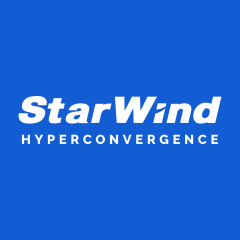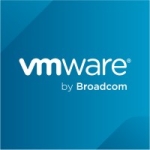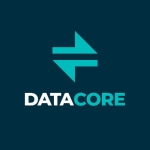What is our primary use case?
I recently underwent a server migration process, which involved converting multiple virtual machines to the QCOW2 format. This challenge required adapting various VMs to ensure a seamless transition, highlighting the importance of flexibility in IT infrastructure management.
StarWind Virtual SAN proved indispensable during our server migration, offering flexibility, high availability, and performance optimization. Its user-friendly interface simplified management and vendor independence ensured adaptability. This software has left a lasting, positive impact on our organization's IT infrastructure, positioning us for future success.
How has it helped my organization?
The use of StarWind Virtual SAN during the server migration process and conversion of virtual machines to the qcow2 format provided significant benefits to our organization. The software offered the flexibility needed to smoothly carry out this complex transition. Ensuring high availability and optimizing VM performance, StarWind Virtual SAN improved our IT infrastructure, resulting in more efficient and reliable operations.
One of the standout features of StarWind Virtual SAN was its independence from specific hardware vendors. This vendor independence is a boon in today's dynamic IT environment. It allowed us to make procurement decisions based solely on our organization's needs, free from the constraints of vendor lock-in. This autonomy ensured that our IT infrastructure remained agile and adaptable, capable of swiftly adjusting to emerging technologies and changing requirements.
What is most valuable?
The ability to keep data accessible even in the event of hardware failures is highly valued, as it ensures business continuity.
A user-friendly and intuitive management interface makes system administration simpler, saving time and resources.
Optimizing the performance of virtualized storage is crucial, ensuring that VMs operate efficiently.
The ability to perform well with multiple hypervisors offers flexibility and avoids vendor lock-in.
Vendor independence allows organizations to choose hardware components that best suit their needs.
What needs improvement?
Ongoing improvements in read and write performance would help meet increasingly demanding workloads.
A more comprehensive monitoring system with proactive alerts can enhance visibility and responsiveness.
Advanced automation features for storage provisioning and resource management can save time and reduce errors.
Enhancements in disaster recovery capabilities, such as faster failover and streamlined recovery procedures, would be valuable.
Adding support for emerging or less common hypervisors can increase flexibility.
Enhancing security features, such as data encryption and two-factor authentication, to meet stricter compliance requirements.
Integration with cloud storage services for greater scalability and backup options.
For how long have I used the solution?
I've used the solution for just under one year.
What do I think about the stability of the solution?
Considering that StarWind Virtual SAN allows for scalability, it is important to plan accordingly as you add more resources and storage capacity, ensuring that the system remains stable through all stages of growth.
What do I think about the scalability of the solution?
StarWind Virtual SAN's performance is impressive and offers scalability as one of its main advantages. The solution is designed to grow with your IT infrastructure needs. This means that as your organization expands and requires more storage resources, you can add additional nodes to your StarWind cluster to accommodate this growth.
Which solution did I use previously and why did I switch?
I did not use a different solution previously.
How was the initial setup?
The setup is very simple. The tool is very educational.
What's my experience with pricing, setup cost, and licensing?
It is advisable to conduct a detailed assessment of your infrastructure needs and compare setup costs, pricing, and licensing with alternatives in the market. Take into account scalability, technical support, and your specific environment requirements. Additionally, explore licensing options that best align with your budget and long-term planning. Evaluating your organization's needs and resources is crucial for making an informed decision regarding the investment in StarWind Virtual SAN.
Which other solutions did I evaluate?
I did not evaluate other options.
What other advice do I have?
Establish a good relationship with the vendor's support team. They can provide valuable assistance during setup, troubleshooting, and ongoing maintenance.
Keep the software up to date with the latest patches and updates to benefit from security enhancements and performance improvements.
Consider your organization's future growth and ensure the solution can scale accordingly. This avoids potential disruptions due to increased demands.
Implement a robust backup and disaster recovery strategy alongside your virtual SAN solution to safeguard critical data.
Stay informed about industry trends and emerging technologies to ensure your infrastructure remains competitive and efficient.
Invest in training for your IT team to maximize the value of the solution and facilitate knowledge transfer.
Continuously monitor the performance of your virtual SAN to identify and address any issues promptly.
Which deployment model are you using for this solution?
On-premises
Disclosure: My company does not have a business relationship with this vendor other than being a customer.

















